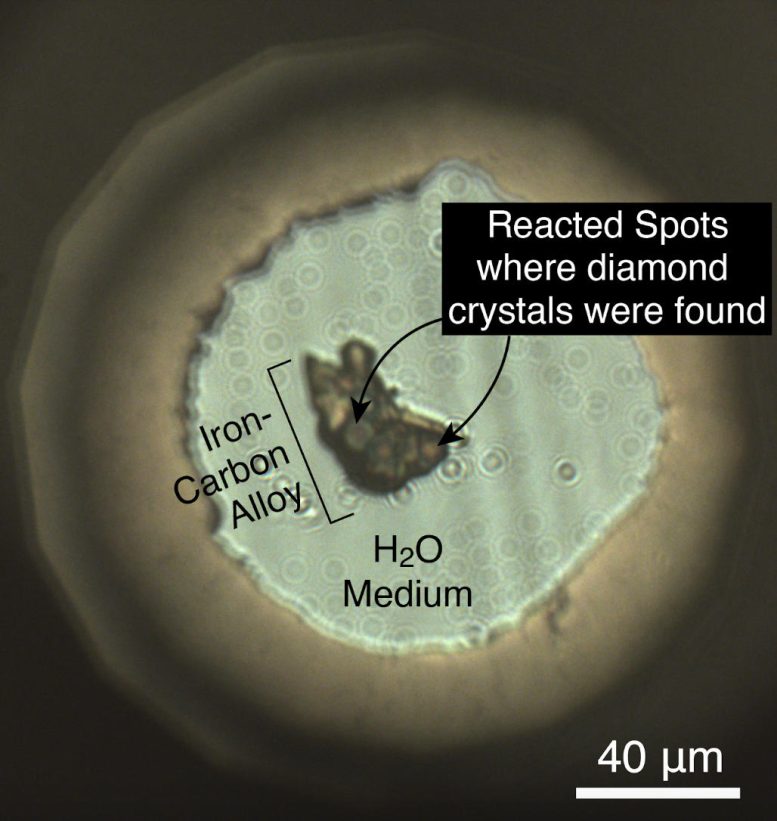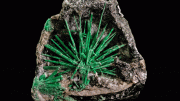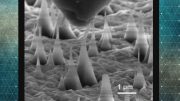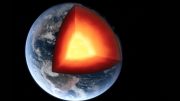
Scientists have discovered that much more carbon exists in the mantle than predicted.
Researchers find rust and diamonds at the Earth’s core-mantle boundary.
On the Earth’s surface, steel rusts due to water and air. But what about deep inside the interior of the Earth?
The biggest carbon storage on Earth is the Earth’s core, where 90% of the carbon is buried. Scientists have shown that the oceanic crust, which rests on top of tectonic plates and falls into the interior, contains hydrous minerals and can occasionally reach the boundary between the core and the mantle. At the core-mantle border, the temperature is at least two times that of lava and is high enough to allow water to escape from the hydrous minerals. As a result, a chemical reaction comparable to rusting steel might occur near Earth’s core-mantle boundary.
Byeongkwan Ko, a recent Ph.D. graduate from Arizona State University, and his colleagues recently published their findings on the core-mantle boundary in the journal Geophysical Research Letters. They carried out experiments at the Advanced Photon Source at the Argonne National Laboratory, compressing and heating water and an iron-carbon alloy to conditions similar to those at the Earth’s core-mantle boundary, melting the iron-carbon alloy.

The iron-carbon alloy reacted with water at high pressure and high-temperature conditions related to the Earth’s deep mantle in a diamond-anvil cell. Credit: Arizona State University
The scientists discovered that water and metal react to form iron oxides and iron hydroxides, just like rusting on Earth’s surface. However, they observed that at the core-mantle boundary conditions, carbon separates from the liquid iron-metal alloy and forms diamonds.
“Temperature at the boundary between the silicate mantle and the metallic core at 3,000 km depth reaches to roughly 7,000 F, which is sufficiently high for most minerals to lose H2O captured in their atomic-scale structures,” said Dan Shim, professor at ASU’s School of Earth and Space Exploration. “In fact, the temperature is high enough that some minerals should melt at such conditions.”
Because carbon is an iron-loving element, significant carbon is expected to exist in the core, while the mantle is thought to have relatively low carbon. However, scientists have found that much more carbon exists in the mantle than expected.
“At the pressures expected for the Earth’s core-mantle boundary, hydrogen alloying with iron metal liquid appears to reduce the solubility of other light elements in the core,” said Shim. “Therefore, the solubility of carbon, which likely exists in the Earth’s core, decreases locally where hydrogen enters into the core from the mantle (through dehydration). The stable form of carbon at the pressure-temperature conditions of Earth’s core-mantle boundary is diamond. So the carbon escaping from the liquid outer core would become diamond when it enters into the mantle.”
“Carbon is an essential element for life and plays an important role in many geological processes,” said Ko. “The new discovery of a carbon transfer mechanism from the core to the mantle will shed light on the understanding of the carbon cycle in the Earth’s deep interior. This is even more exciting given that the diamond formation at the core-mantle boundary might have been going on for billions of years since the initiation of subduction on the planet.”
Ko’s new study shows that carbon leaking from the core into the mantle by this diamond formation process may supply enough carbon to explain the elevated carbon amounts in the mantle. Ko and his collaborators also predicted that diamond-rich structures can exist at the core-mantle boundary and that seismic studies might detect the structures because seismic waves should travel unusually fast for the structures.
“The reason that seismic waves should propagate exceptionally fast through diamond-rich structures at the core-mantle boundary is that diamonds are extremely incompressible and less dense than other materials at the core-mantle boundary,” said Shim.
Ko and the team will continue investigating how the reaction can also change the concentration of other light elements in the core, such as silicon, sulfur, and oxygen, and how such changes can impact the mineralogy of the deep mantle.
Reference: “Water-Induced Diamond Formation at Earth’s Core-Mantle Boundary” by Byeongkwan Ko, Stella Chariton, Vitali Prakapenka, Bin Chen, Edward J. Garnero, Mingming Li and Sang-Heon Shim, 11 August 2022, Geophysical Research Letters.
DOI: 10.1029/2022GL098271









“Because carbon is an iron-loving element, significant carbon is expected to exist in the core, …”
What do the authors mean by “significant?” While iron/nickel carbides and graphite are known in iron meteorites, they are probably much less than 5%.
Something for the Americans to help destroy the planet like they do